- BEND
- The heraldic term for a diagonal stripe which runs for the upper dexter to the lower
sinister of a shield, a banner of arms or any quartering thereof, and which (in strict
heraldic usage) should occupy about one-third of the field when charged, and one-fifth
when plain – but see
Appendix IX and
descending diagonal
(also banner of arms, dexter,
in bend,
per bend,
quartering 1),
sinister and
triangular panel 2)).
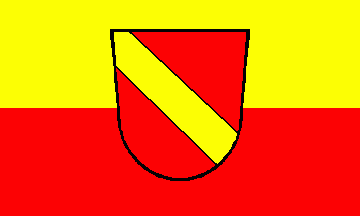
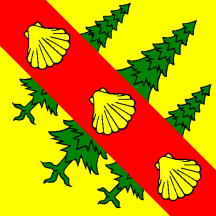
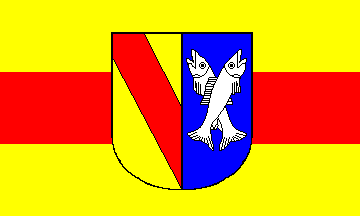
Flag of Neuenburg upon Rhine, Germany;
Flag of Treycovagnes, Switzerland;
Flag of Weisweil, Germany
- BEND ON (or BEND ONTO)
- (v) Nautical terms for securing two pieces of rope together as in attaching
the hoistline of a flag to the halyard of a flag pole or mast (see
halyard and
hoistline).
- BEND SINISTER
- The heraldic term for a diagonal stripe which runs for the lower dexter to the upper
sinister of a shield, a banner or arms or any quartering thereof, and which (in strict
heraldic usage) should occupy about one-third of the field when charged, and one-fifth when
plain – but see Appendix IX and
ascending diagonal
(also banner of arms,
dexter,
in bend sinister,
per bend sinister,
quartering 1),
sinister and
triangular panel 2)).
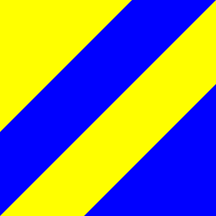
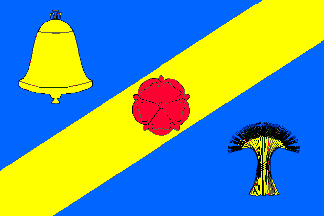
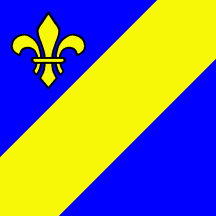
Flag of Gränichen, Switzerland;
Flag of Frankerandeel, The Netherlands;
Flag of Coeuve, Switzerland
Please note that a bend or baton sinister, sometimes incorrectly called a "bar sinister", was
originally placed over a coat of arms to indicate illegitimacy – see
baton(s) 2).
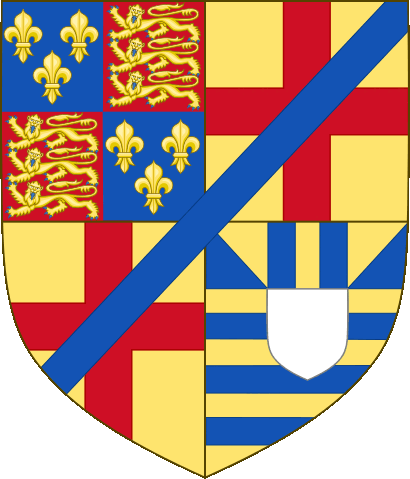
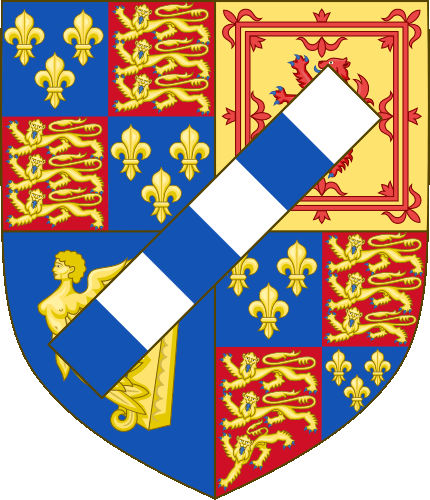
The Arms of Arthur Plantagenet (d1542) illegitimate son of King Henry V, England
(Wikimedia); Arms of
the Duke of Grafton (1663–1690) illegitimate son of King Charles II, England
(Wikimedia)
- BEND SINISTER WAVY
- In heraldry see bend (also wavy).
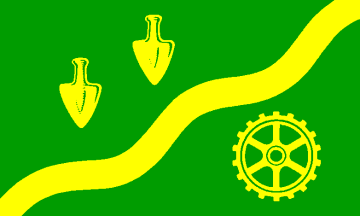
Flag of Schenefeld, Germany
- BEND WAVY
- In heraldry see bend (also wavy).
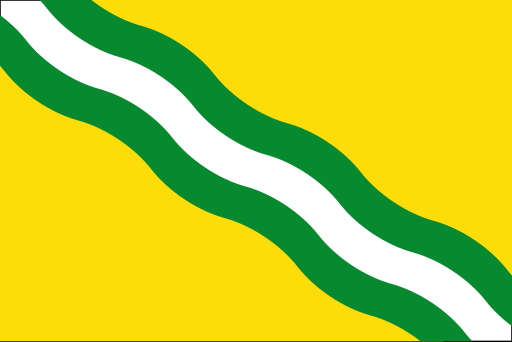
Flag of Lentegí, Spain (Wikimedia)
- BENDLET and BENDLET SINISTER
- The heraldic term for a diminutive of bend and bend sinister, nominally half the width of a bend
but often much narrower, sometimes wavy and usually (but not invariably)
appearing in numbers of two or more – see ‘bend’ and ‘bend sinister’
(also bendlet wavy & bendlet sinister wavy)
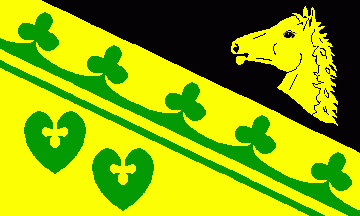
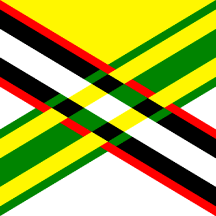
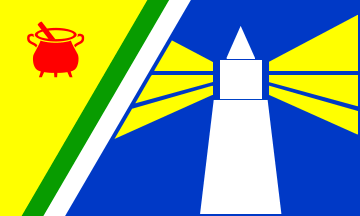
Flag of Mustin, Germany;
Flag of Grolley, Switzerland;
Flag of Südtondern, Germany
- BENDLET WAVY and BENDLET SINISTER WAVY
- In heraldry see bendlet and bendlet sinister
(also wavy).
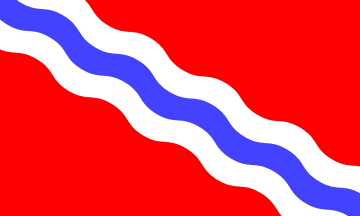
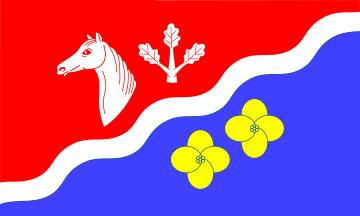
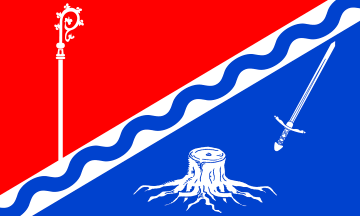
Flag of Bredenbek, Germany;
Flag of Trave-Land, Germany;
Flag of Wesenberg, Germany
- BENDWISE (or BENDWISE SINISTER)
- 1) In traditional heraldry see in bend
and in bend sinister.
2) In some heraldic usage this term relates specifically to the axis of a charge or charges,
rather than to its, or their position, on a shield, a banner of arms or a flag – but see
in bend
and in bend sinister as referenced above.
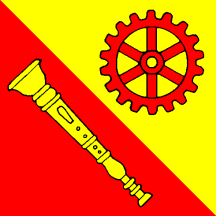
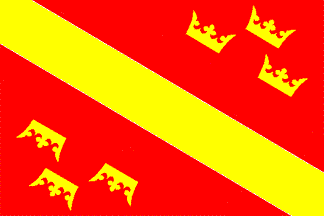
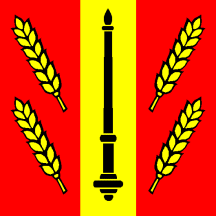
Flag of
Le Sentier, Switzerland; Flag of Haut Rhin,
France; Flag of Eiken, Switzerland
- BENDY
- 1) The heraldic term for the division of a shield, a banner of arms or any quartering
thereof, into four or more usually (but not invariably) equal bends or bendlets,
and running from the upper dexter to the lower sinister in alternating
tinctures – but see bend and
multi-stripe
(also banner of arms, dexter,
quartering 1),
sinister and
tincture).
2) See wavy.
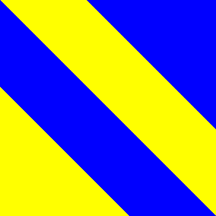
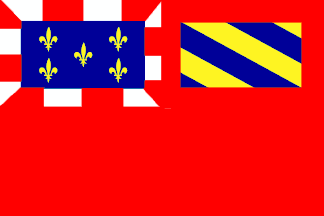
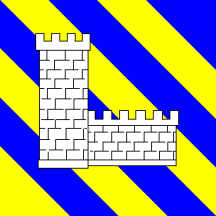
Flag of Schlosswil, Switzerland;
Flag of Dijon, France;
Flag of Molondin, Switzerland
- BENDY SINISTER
- The heraldic term for the division of a shield, a banner of arms or any quartering
thereof, into four or more usually (but not invariably) equal bends or bendlets, and
running from the lower dexter to the upper sinister in alternating tinctures – but see
per bend sinister and
multi-stripe
(also banner of arms,
dexter,
quartering 1),
sinister and
tincture).
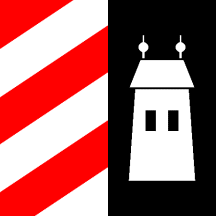
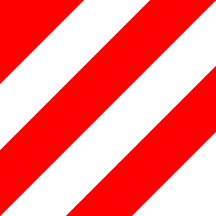
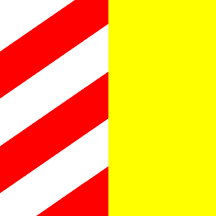
Flag of Halten, Switzerland;
Flag of Wasseramt, Switzerland;
Flag of Trüllikon, Switzerland
- BENT
- In heraldry see embowed.
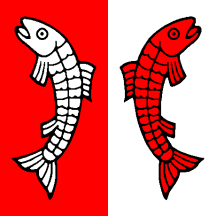
Flag of Rodersdorf, Switzerland
- BETHEL FLAG
- The flag of the Bethel Union, a seaman’s missionary organization, and occasionally flown
in the 19th century by some British and US merchant vessels to indicate that a church service
was taking place (see also church pennant and
flying angel flag).
![[Bethel flag]](../images/v/vxt-d040a.gif)
![[Bethel flag]](../images/v/vxt-d040.gif)
Bethel Flag
- BETSY ROSS FLAG
- A pattern of the stars and stripes whose canton carried thirteen five-pointed stars arranged in a
circle, which according to legend was ordered by George Washington in 1776 and sewn by Betsy Ross
of Philadelphia (see also
continental colours,
eagle standard,
Franklin flag,
great star flags,
old glory,
quincunx,
stars and stripes and
star-spangled banner).
![[Betsy Ross flag]](../images/v/vx-us-1777b.gif)
The Betsy Ross Pattern US National Flag
Please note that the US flag had no official star pattern until 1818,
at which time the 20-star flag (and all subsequent flags) had official patterns for military
purposes. Since 1912 (the 48-star version), the flag has had an official pattern for all purposes,
therefore, the type above is likely one of many patterns used during the period 1777–1795.
- BEWPER (OR BEWPERS)
- A 16th to early 18th century term, now obsolete, for the loosely-woven fabric used to make flags –
see bunting 1) (also breadth 2)).
![[bewper]](../images/v/vx-gb~tne.gif)
![[bewper]](../images/v/vx-gb_1707r.gif)
Typical Ensign c1590, England;
Red Ensign 1707, UK
- BEZANT (OR BESANT)
- Alternative heraldic terms for a gold or yellow disc –
a roundel Or (see hurt,
roundel 3), plates,
pomme(s) and
torteau).
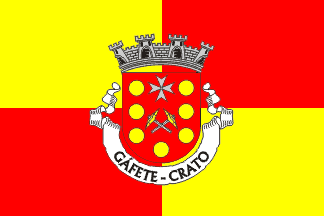
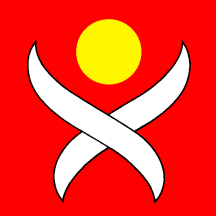
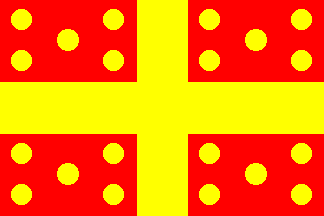
Flag of Gáfete, Portugal;
Flag of Leimbach, Switzerland;
Flag of Harelbeke, Belgium
Notes
a) In strict English heraldic usage
this term should only be employed when the charge described is gold/yellow
("or") – see tinctures.
b)
The term, dating from the time of the Crusades, is derived from a gold coin of Byzantium.
- BICOLOUR (BICOLOR, BI-COLOR or BI-COLOUR)
- 1) A flag of two even or uneven stripes or bands of colour (whether divided vertically, horizontally
or diagonally) and whether defaced or plain – but see note below (also
ascending diagonal 2),
descending diagonal 2),
per fess,
per bend,
per bend sinister,
per pale,
deface,
plain 2) and
stripe).
- 2) An undefaced flag with two equal (vertical or horizontal) stripes or bands
of colour – a simple bicolour
– but see horizontal bicolour with
vertical stripe at hoist (also undefaced).
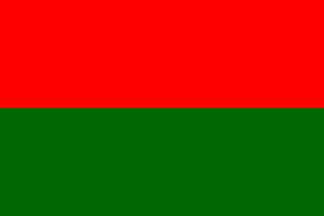
![Bicolour [Portugal]](../images/v/vx-pt.gif)
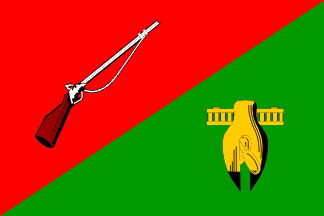
Flag of the Guarany People, Argentina;
National Flag of Portugal;
Flag of Stary Oskol, Russia
Please note that the division line on a bicolour may be described by
using the vexillological terms: horizontal or vertical, by 'descending diagonal' and 'ascending diagonal';
or by the corresponding heraldic terms (party/divided): 'per fess', 'per pale', 'per bend' and
'per bend sinister'.
- BIG ARMS (or BIG COAT OF ARMS)
- See greater arms under arms.
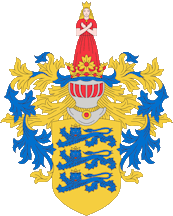
Big/Greater Arms of Tallinn, Estonia
- BILLET
- The heraldic term for a small rectangular charge usually (but not
invariably) shown upright – but see billetty.
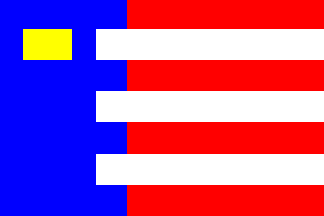
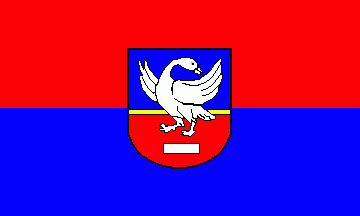
Flag of Baarle-Nassau, The Netherlands;
Flag of Ganderkesee, Germany
- BILLETTY
- The heraldic term sometimes used to describe a semé of billets – see
billet and
semé.
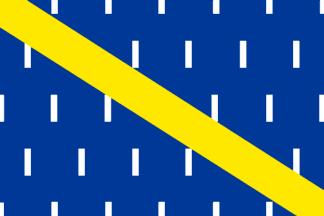
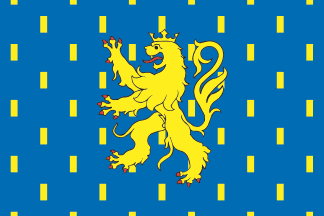
Flag of
Chastre, Belgium; Flag of
Franche-Comté, France
- BIRDS IN HERALDRY
- See eagle 3),
martlet
and vigilant
(also armed 2),
beaked,
displayed,
in her piety,
langued,
rising,
perched,
vol,
volant
and wattled 2).
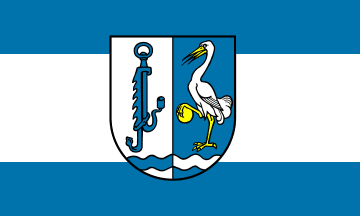
2018.gif)
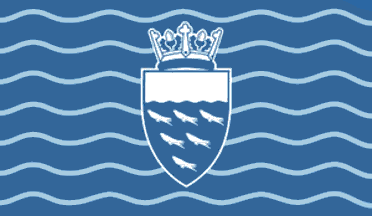
Flag of Wittingen-Radenbeck, Germany;
National Arms of Romania;
Flag of West Sussex, England
- BIRLINN
- In Scottish heraldry see lymphad.
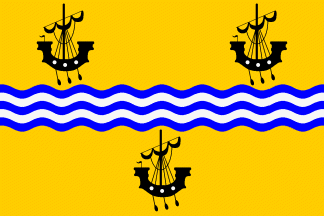
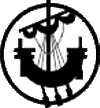
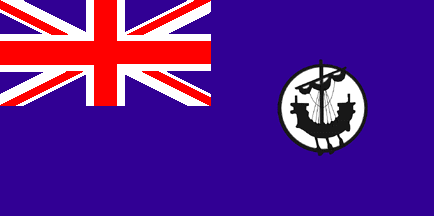
Flag and Badge of The Western Isles Council, Scotland, plus (doubtful) Badge and
Blue Ensign
- BISHOP'S CROOK (or BISHOP'S STAFF)
- See crozier.
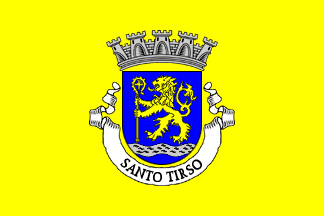
Flag of Santo Tirso, Portugal


























![[Betsy Ross flag]](../images/v/vx-us-1777b.gif)
![[bewper]](../images/v/vx-gb~tne.gif)
![[bewper]](../images/v/vx-gb_1707r.gif)




![Bicolour [Portugal]](../images/v/vx-pt.gif)







2018.gif)






![[Bethel flag]](../images/v/vxt-d040a.gif)
![[Bethel flag]](../images/v/vxt-d040.gif)